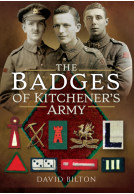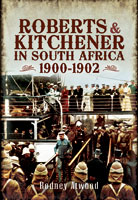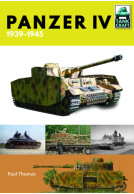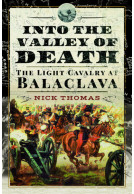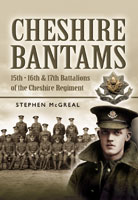Guiseley Terriers: A Small Part in the Great War (Hardback)
A History of the 1/6th Battalion, Duke of Wellington's West Riding Regiment
Imprint: Pen & Sword Military
Pages: 244
Illustrations: 50
ISBN: 9781526703521
Published: 5th December 2018
(click here for international delivery rates)
Need a currency converter? Check XE.com for live rates
| Other formats available - Buy the Hardback and get the eBook for free! | Price |
|---|---|
| Guiseley Terriers: A Small Part… ePub (24.1 MB) Add to Basket | £6.99 |
After the Battle of the Lys in April 1918, Field-Marshal Sir Douglas Haig said of the 147th (Territorial) Brigade:
'I desire to express my appreciation of the very valuable and gallant services performed by troops of the 49th (West Riding) Division since the entry of the 147th Brigade into the Battle of Armentières. The courage and determination showed by this division has played no small part in checking the enemy’s advance and I wish to convey to General Cameron and all the officers and men under his command my thanks for all they have done.'
In April 1918, the ‘Saturday night soldiers’ from Bingley, Guiseley, Haworth, Keighley, Settle and Skipton halted the German advance at a critical time in the war during the German spring offensive. Haig’s ‘Backs to the Wall’ order had just been issued when the 1/6th Duke of Wellington’s Regiment was sent to the front-line at Armentières. After nearly four years at the front, they had been transformed from part-time enthusiastic amateurs to battle hardened veterans, having fought in some of the Great War's major battles, including suffering the effects of mustard gas at Nieuport. It was a source of pride to the men of the battalion that they had never given up ground to the enemy, unless ordered to by a higher authority, and only then reluctantly.
Using newspaper archives, war diary extracts, personal accounts and previously unpublished photographs, Stephen Barber retraces the formation and history of the 1/6th Duke of Wellington’s Regiment from the creation of the Volunteer Rifle Corps in 1860, to its mobilisation in the Great War. A day-by-day account of their movements and actions over the four-year period culminates in the pursuit of the retreating German Army at Famars, on 1 November 1918.
As featured in
Stand To! Western Front Association, October 2019
Guiseley Terriers really does bring home the dreadful price paid by the towns and villages of the West Riding. A valuable addition to the any First World War regimental library.
Military Historical Society
Overall this book would be of great use as a reference for anyone with a relative who fought with the 1/6th Bn.
Sky & Bullets, Paul Smiddy
Today's Army Reserve doesn't have the same ring about as its predecessor the Territorial Army, better known as the Terriers. In Stephen Barber's well sourced work 'Guiseley Terriers, the History of the 1/6th Duke of Wellington's (West Riding) Regiment', the publics view of the Terriers was that it more like a Boys' Club, a meeting place for friends and relatives. Men [and boys] with fire in their belly and iron in their blood, ready to serve their country. Their military role was not to fight a pitch battle if Guiseley district was over-run, but to remain behind and attack enemies lines of communication. A strategy reborn in 1940, when German forces were expected to land along the south coast, the secretly formed Auxiliary units were given the same role; not to be confused with the Home Guard. This role in WW ll, became more formalised with the formation of Special Operations Executive (SOE).
Richard Gough, Military Author and Historian
At the outbreak of World War l in August 1914, the Guiseley Terriers like other Territorial units were at annual camp but within a short time they were in northern France. Like dominos falling, European nations bound together in Treaties if attacked, were drawn into the conflict. In France the Guiseley Terriers, trained to hit and run behind the lines found themselves in pitched battles, shelled, sniped and gassed.
The book is well researched with photographs, maps and stories of the men and their families. Apart from being an interesting read and page turner, its detailed descriptions of local men, their families and relations also serving the Battalion, may be useful to family researchers.
Some great new books from Pen and Sword books: love the WW1 unit histories they publish & this is an excellent one with well researched text, lots of unique images & superb maps. Lots about the unit on the Somme & nice battlefield overlays showing where they fought. Recommended!
Paul Reed via Twitter
Article: 'New book focuses on vital Great War unit' as featured by
Craven Herald and Pioneer, 31st January 2019
Article: Historic unit ‘crucial’ to WWI success as featured by
Keighley News (online), 16th January 2019 - words by Alistair Shand
Faced with a dozen books to review I came to this book thinking it would be just another local history of a unit I knew little about. How wrong was I! This book is a gem. It delivers on the local history magnificently with a rich narrative deep with information on the men of the battalion who served. The sources are good, the photographs placed relevant to the narrative (which I like in this type of book) and I didn’t tire of reading about these men. Also I like that the author has taken the trouble to add information about the weapons and weapon systems he mentions so that the reader has a more rounded view of the events. Clearly the author has not hatched this book from behind a desk – he has visited the battlefield locations and his photographs of modern day locations add to this book’s value. Highly recommended.
Michael McCarthy
Michael McCarthy. Battlefield Guide.
About Stephen Barber
Stephen Barber is a former soldier who joined the Prince of Wales’s Own Regiment of Yorkshire in 1979 as a 16-year-old. He spent six years in the regiment, serving in Norway, Canada, West Berlin and Northern Ireland. After leaving the army, he joined the Metropolitan Police and was posted to Gerald Road Police Station, near Eaton Square, in central London. In 1992, he transferred to the West Yorkshire Police where he served in various departments including Community Policing, Firearms Support Unit, and as a Detective in the Force Intelligence Unit. Stephen is now retired and spends his time walking in the Yorkshire Dales and assisting as a volunteer at a local pre-school.








